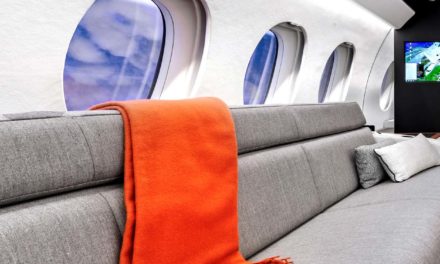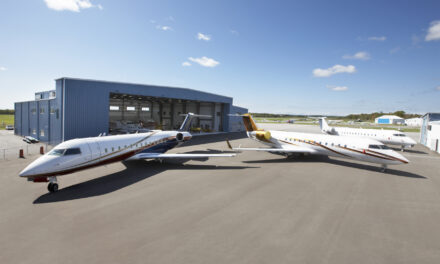The arrival of autumn marks the beginning of the aeronautical winter season. Cold and humidity will soon be the daily weather forecast, but also represent the icy conditions so dreaded by many pilots. These two factors will significantly impact flight safety if a minimum of precautions are not taken, the icing can go as far as causing the aircraft to stall.
Potential engine damage
Icing is due to two cumulative phenomena, namely the presence of water (in liquid form) and negative temperatures. In contact with the aircraft airframe, this water turns into ice and can modifie the profile of the wing. This modification has the direct consequence of a decrease of the lift and an increase of the drag. This accumulation of ice also increases the weight of the aircraft. These phenomena can go as far as causing the aircraft to stall or damage the engines if pieces of ice are sucked in.
We will not concentrate on the pilot aspect of this, but will focus on the handling of the aircraft on the ground. In this regard, the bedside reading of any good professional is the IATA Ground Operations Manual. This book contains all the rules and good practices regarding de-icing; the comments in this article are largely based on it. In general, an aircraft can take off only if its external surfaces are free from any contamination that could affect its performance and maneuverability. The only exceptions allowed must be expressly stipulated in flight manuals specific to each aircraft.
Two types of ice protection
The first is called de-icing. It consists of eliminating ice and frost after its formation. The second, called anti-icing, consists of avoiding any ice deposit. In the following, we will discuss the issue of de-icing. It is the captain, or the company representative, who alone decides on the need for de-icing. De-icing is a fairly simple operation in principle but delicate in its implementation and the responsibilities it carries. De-icing translates into the fact of removing ice, or snow, present on the aircraft by a high-pressure spraying, and as close to the surface, with a heated de-icing fluid. This liquid consists of alcohol, glycol (ethylene glycol and propylene glyco in accordance with ISO 11076 and ISO 11078) and water. The action temperature is specific to each manufacturer and usually close to 80 °C. The operation of heating of the glycol is quite sensitive because, if too heated, this product loses its properties, and if not hot enough, it will not have its optimum efficiency. The product temperature can be checked in the deicer tank and at the nozzle.
Beforehand, the handling company’s personnel will have mechanically removed the maximum amount of snow and other contaminants by means of scrapers dedicated to this operation (in order to eliminate any risk of scratches and other surface damage). De-icing therefore combines a mechanical action and a thermal action. Mechanically, the pressure of the spray jet “pierces” the contaminant layer so that the glycol can come into contact with the skin of the aircraft. This spray thus physically removes ice, or snow, from the surfaces of the aircraft. Thermally, the heat of the product melts the same contaminant and detaches it from the surface of the aircraft. The chemical action of the glycol contained in the fluid also offers a residual protection, the duration of which depending on the characteristics of the fluid / water mixture used: in case of active precipitation, it allows for the application of an anti-icing fluid before the first de-icing fluid freezes. The personnel of the handling company must of course be trained in this technique. Each company is entitled to verify that the annual operator review has been carried out by an approved organization (training in accordance with EU-AIROPS GM2 / 3 NCC.OP.185).
Upstream & downstream
Many controls are performed upstream and downstream of the operation. All of these elements, as well as the entire process, must be listed in a manual which each of the handler’s operators must know well. For example, before each start of the IATA winter season, a stock take of what remains from the previous season must be carried out to ensure that product performance is maintained. An annual test must be performed by a recognized company, usually the product’s manufacturer. if stored in cubitainers of 1M3, each container must be verified individually. The purpose of the visual check is to look at the condition of the container but also at the integrity of the contents.
Each captain, or airline representative, is entitled to be provided with documents to verify the name of the product used by the operator, the type of product, its dilution ratio and the batch number. The traceability of de-ice and anti-ice operations is carried out using numbered de-icing cards, which must be printed in triplicate: one copy for the flight crew, one for the company representative operator and one for the handling company for archive purpose.
These de-icing procedures are binding but only their scrupulous respect allows winter flights to take place in optimal safety conditions.









